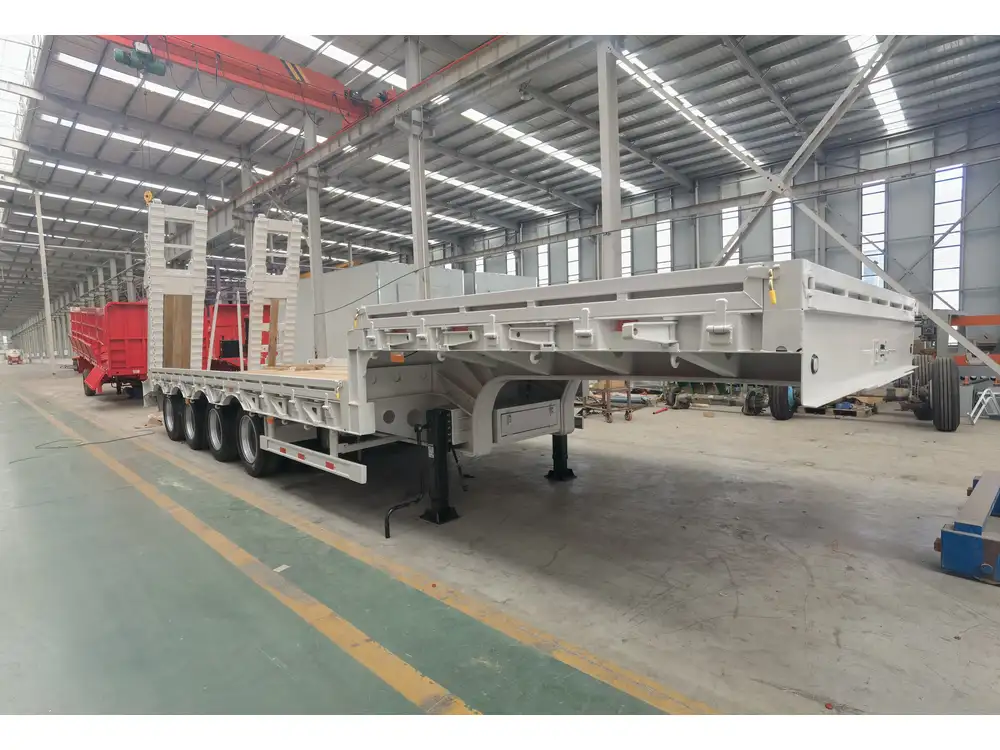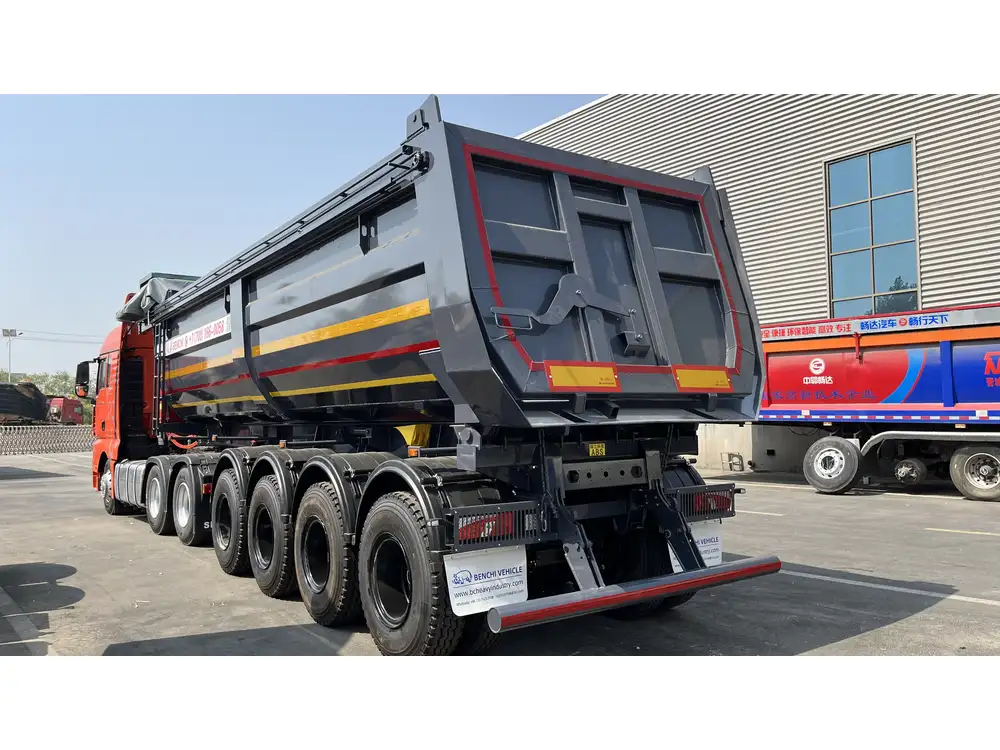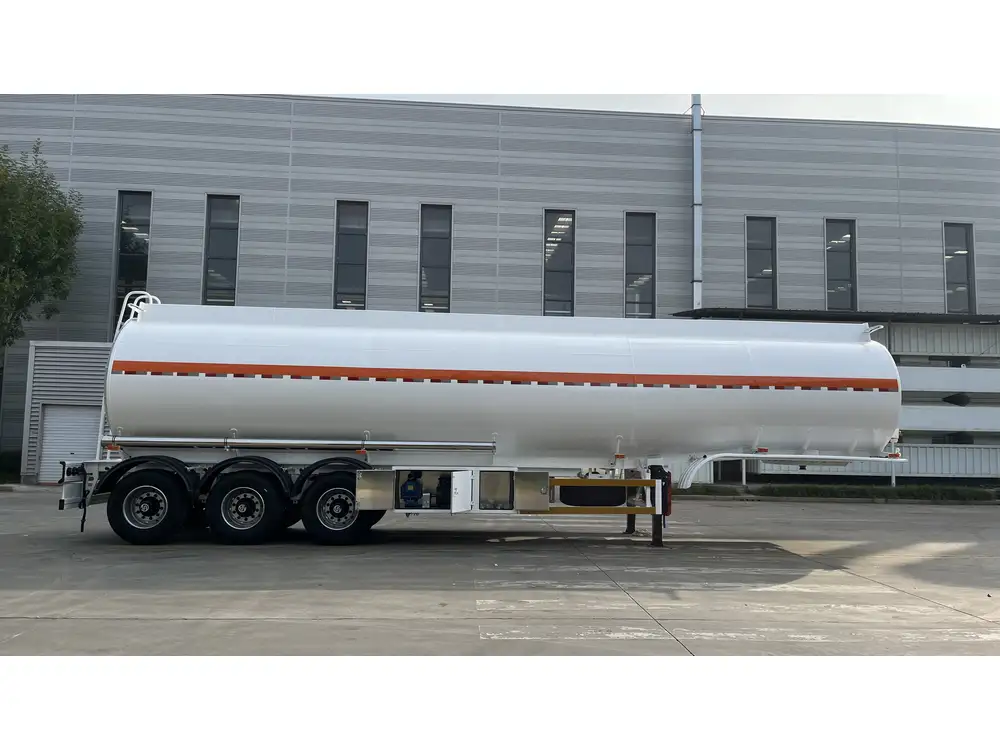When considering the logistics of transporting heavy loads, one must invariably address the pivotal question: how much does an 18-foot flatbed trailer weigh? The weight of a flatbed trailer is not merely a statistic; it plays a consequential role in determining payload capacity, compliance with legal weight limits, and the overall performance of hauling systems. This article delves into the myriad factors influencing trailer weight, provides a comparative analysis with other trailer types, and equips you with critical knowledge for optimizing your transportation needs.
The Basics: What Is an 18-Foot Flatbed Trailer?
An 18-foot flatbed trailer is a versatile tool commonly employed in various industries, including construction, agriculture, and freight transportation. It features a flat, open design that allows for easy loading and unloading of goods such as heavy machinery, vehicles, and bulk materials.
Key Specifications of an 18-Foot Flatbed Trailer
| Specification | Details |
|---|---|
| Length | 18 feet |
| Width | 8.5 feet (standard) |
| Height | Varies (typically around 3-4 feet) |
| Axles | Typically 2 or 3 |
| Materials | Steel or aluminum |
| Load Capacity | 10,000 to 14,000 pounds (avg.) |
| Weight | 2,500 to 5,000 pounds (avg.) |

Weight Factors of 18-Foot Flatbed Trailers
The total weight of an 18-foot flatbed trailer can fluctuate considerably based on several factors. Understanding these variables can guide you in making informed decisions tailored to your operational requirements.
1. Construction Material
The choice of materials used in constructing a flatbed trailer is paramount. Steel trailers are generally heavier and sturdier, making them ideal for transporting heavier loads. Conversely, aluminum trailers provide a lighter alternative, enhancing fuel efficiency but potentially limiting their load capacity.
| Material | Weight | Durability | Advantages |
|---|---|---|---|
| Steel | Heavier | More durable | Better for heavy loads |
| Aluminum | Lighter | Less durable | Enhanced fuel efficiency, rust-resistant |
2. Design and Features
The inherent design of the trailer can also impact its weight. For instance, an 18-foot flatbed configured with additional features—such as reinforced flooring, integrated winches, or toolboxes—will weigh significantly more than a basic version.

3. Axle Configuration
Most 18-foot flatbed trailers come with an axle configuration that can encompass two or three axles. The axle count is integral to distributing weight effectively and has direct implications on the trailer’s total weight. Three-axle trailers, while typically heavier than their two-axle counterparts, offer increased stability and load capacity.
4. Accessories and Modifications
Trailers equipped with additional accessories such as side rails, tarps, and specialized tie-downs increase the total weight. While these adaptations enhance functionality, they also affect payload considerations.
Payload Capacity: An Essential Consideration
Understanding not just the weight of the trailer itself but also its payload capacity is paramount. The payload capacity is defined by the difference between the trailer’s Gross Vehicle Weight Rating (GVWR) and its own weight.

Calculating Payload Capacity
For example, if an 18-foot flatbed trailer weighs 4,000 pounds and has a GVWR of 14,000 pounds, the payload capacity can be calculated as follows:
[ \text{Payload Capacity} = \text{GVWR} – \text{Trailer Weight} ] [ \text{Payload Capacity} = 14,000 \text{ lbs} – 4,000 \text{ lbs} = 10,000 \text{ lbs} ]Importance of Compliance with Weight Restrictions
Overloading a trailer not only compromises safety but may also lead to legal repercussions. Compliance with Federal Highway Administration weight limits is mandatory, and ignoring these regulations can result in fines, vehicle damage, and accidents.
Comparing 18-Foot Flatbed Trailers with Other Trailers
To discern the unique positioning of the 18-foot flatbed trailer, it is prudent to compare it with other commonly used trailer types, such as enclosed trailers and utility trailers.
| Trailer Type | Weight Range | Payload Capacity | Best Use Cases |
|---|---|---|---|
| 18-Foot Flatbed | 2,500 – 5,000 lbs | 10,000 – 14,000 lbs | Heavy machinery, pallets |
| Enclosed Trailer | 3,000 – 6,000 lbs | 7,000 – 12,000 lbs | Protection from weather, theft |
| Utility Trailer | 1,200 – 3,000 lbs | 2,000 – 3,500 lbs | Landscaping, smaller loads |

Advantages of 18-Foot Flatbed Trailers
Loading Versatility: The open design allows for easy loading from all sides, accommodating a wide range of goods.
Accessibility: Loading and unloading can be executed with cranes or forklifts, making it simpler for transporting oversized items.
Weight Efficiency: With the ability to load heavier items while still maintaining manageable self-weight, flatbed trailers showcase a stronger payload in relation to their weight.
Regulations and Considerations for Hauling
Before embarking on using an 18-foot flatbed trailer, several regulations must be accounted for to ensure safety, legality, and efficiency in transporting materials.
1. Local State and Federal Regulations
Ensure familiarization with state-specific and federal hauling regulations regarding maximum weight limits, loading zones, and necessary permits for overweight loads.

2. Safety Features and Equipment
Incorporate essential safety features such as load straps, tarps, and reflective markers to minimize risk during transport. Proper securing of loads is crucial to prevent accidents on the road.
3. Regular Maintenance and Inspections
Maintaining trailer integrity through regular inspections and adherence to maintenance schedules enhances longevity and reliability. Inspect brakes, tires, and suspension systems periodically.
Frequently Asked Questions (FAQs)
Q1: What is the typical weight range for an 18-foot flatbed trailer?
A1: The weight typically ranges from 2,500 to 5,000 pounds, depending on the construction materials and added features.
Q2: How does the weight of a flatbed trailer affect fuel consumption?
A2: Heavier trailers can lead to increased fuel consumption due to the additional power required to tow them, thereby affecting operational costs.
Q3: Does the type of axle influence the trailer’s weight capacity?
A3: Yes, trailers with more axles can distribute weight more effectively, which can enhance payload capacity depending on design.

Conclusion
Navigating the complexities of transporting heavy loads requires an in-depth understanding of the weight dynamics surrounding 18-foot flatbed trailers. From construction materials and additional features to payload capacity and compliance with regulations, every detail plays a significant role in determining efficiency and safety. By arming yourself with this knowledge, you can make informed decisions that not only optimize your transportation needs but also ensure adherence to legal requirements, ultimately paving the path for successful operations.
In sum, whether you’re a seasoned logistics professional or a newcomer to the transportation industry, grasping the intricacies of trailer weight can significantly impact your operational efficacy and success.



